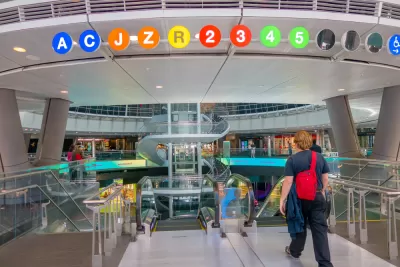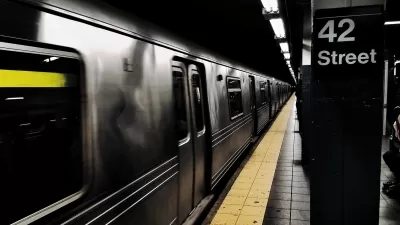The New York Times devotes feature-length coverage to the soaring costs of subway construction in New York City, where the cost of construction has reached as high as seven times the average around the world.

According to Brian M. Rosenthal, excessive staffing, little competition, generous contracts and archaic rules are responsible for dramatically inflating capital costs for transit in New York.
Two projects exemplify the scale of the problem with construction costs at the Metropolitan Transportation Authority:
The estimated cost of the Long Island Rail Road project, known as “East Side Access,” has ballooned to $12 billion, or nearly $3.5 billion for each new mile of track — seven times the average elsewhere in the world. The recently completed Second Avenue subway on Manhattan’s Upper East Side and the 2015 extension of the No. 7 line to Hudson Yards also cost far above average, at $2.5 billion and $1.5 billion per mile, respectively.
Meanwhile, the system is saddled with a maintenance backlog causing service disruptions, a frustrated public, and political conflict between the mayor and the governor.
Rosenthal takes a deep, investigatory dive into the reasons for the ballooning costs. For instance, an accountant discovered in 2010 that some 200 extra employees were employed at a $1,000 on a project to build new platforms under Grand Central Terminal. The public was never notified of the error. Rosenthal finds evidence of trade unions and construction companies ballooning costs and employment levels without scrutiny, thanks to sweetheart deals with the politicians.
"Public officials, mired in bureaucracy, have not acted to curb the costs. The M.T.A. has not adopted best practices nor worked to increase competition in contracting, and it almost never punishes vendors for spending too much or taking too long, according to inspector general reports," writes Rosenthal.
Offering my opinion on this article now: this article is one of the most revealing pieces of news reporting on planning-related subject matter in several years. It should be considered compulsory for anyone interested in improving public transit and transportation in the country's urban areas. Advocates and voters should also hold their elected officials and the MTA accountable. It's a new year—this seems like a good resolution.
FULL STORY: The Most Expensive Mile of Subway Track on Earth

Alabama: Trump Terminates Settlements for Black Communities Harmed By Raw Sewage
Trump deemed the landmark civil rights agreement “illegal DEI and environmental justice policy.”

Planetizen Federal Action Tracker
A weekly monitor of how Trump’s orders and actions are impacting planners and planning in America.

The 120 Year Old Tiny Home Villages That Sheltered San Francisco’s Earthquake Refugees
More than a century ago, San Francisco mobilized to house thousands of residents displaced by the 1906 earthquake. Could their strategy offer a model for the present?

In Both Crashes and Crime, Public Transportation is Far Safer than Driving
Contrary to popular assumptions, public transportation has far lower crash and crime rates than automobile travel. For safer communities, improve and encourage transit travel.

Report: Zoning Reforms Should Complement Nashville’s Ambitious Transit Plan
Without reform, restrictive zoning codes will limit the impact of the city’s planned transit expansion and could exclude some of the residents who depend on transit the most.

Judge Orders Release of Frozen IRA, IIJA Funding
The decision is a victory for environmental groups who charged that freezing funds for critical infrastructure and disaster response programs caused “real and irreparable harm” to communities.
Urban Design for Planners 1: Software Tools
This six-course series explores essential urban design concepts using open source software and equips planners with the tools they need to participate fully in the urban design process.
Planning for Universal Design
Learn the tools for implementing Universal Design in planning regulations.
Clanton & Associates, Inc.
Jessamine County Fiscal Court
Institute for Housing and Urban Development Studies (IHS)
City of Grandview
Harvard GSD Executive Education
Toledo-Lucas County Plan Commissions
Salt Lake City
NYU Wagner Graduate School of Public Service





























